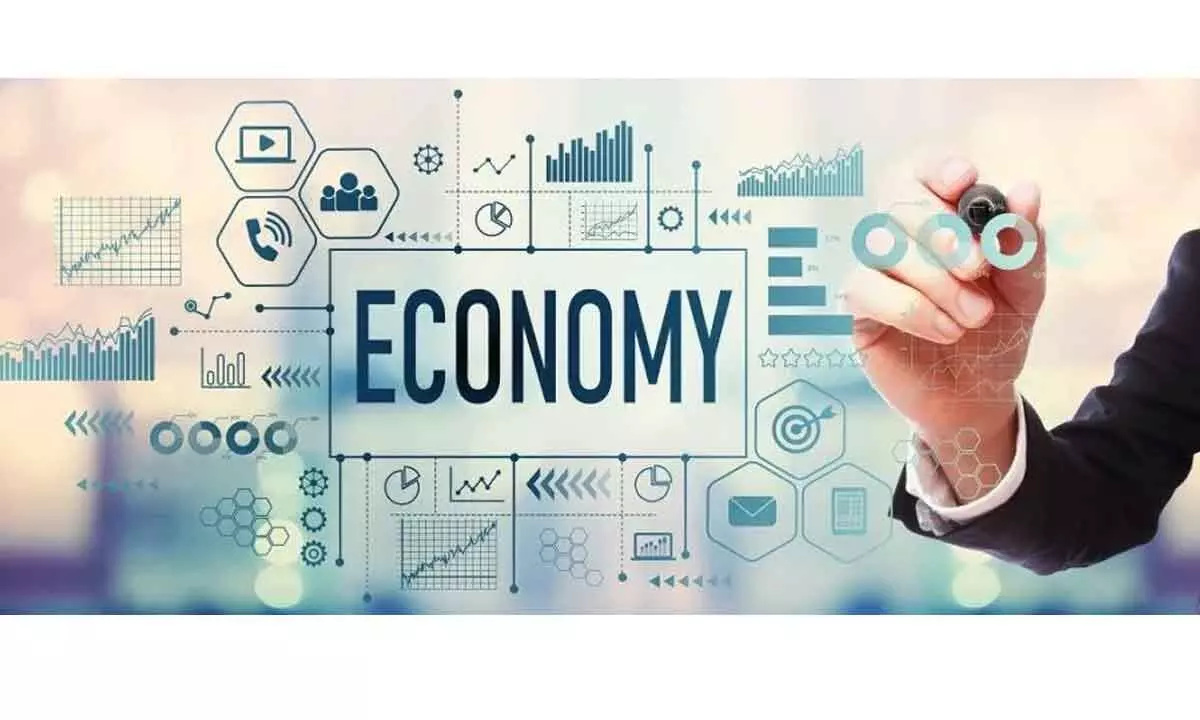Live
- They always want me to win, and now I feel lucky to have been offered a story like ‘Zebra’: Satyadev Kancharana
- ‘Democracy first, humanity first’: PM Modi in Guyana's parliament on two countries' similarities
- PKL Season 11: Telugu Titans register third straight win to top standings
- Is Pollution Contributing to Your COPD?
- NASA Unveils Underwater Robots for Exploring Jupiter's Moons
- Additional Central forces arrive in violence-hit Manipur
- AR Rahman and Saira Banu’s Divorce: Legal Insights into Common Issues in Bollywood Marriages
- 82.7 pc work completed in HPCL Rajasthan Refinery area: official
- Curfew relaxation extended in 5 Manipur districts on Friday
- Tab scam prompts Bengal govt to adopt caution over fund disbursement
Just In
A roadmap for transformative changes in economy


The underlying theme of the Union Budget 2024-25 is rightfully a pledge to push for ‘Viksit Bharat’ with right priorities to “guide India toward...
The underlying theme of the Union Budget 2024-25 is rightfully a pledge to push for ‘Viksit Bharat’ with right priorities to “guide India toward strong development and all-round prosperity”. Notwithstanding the clamour of the opposition, it has unequivocally laid stress on balancing growth with fiscal prudence, while steering clear of populist schemes. Imprudent spend on populism will come at the cost of sustainable growth. Some governments still bank on doles, though.
The first budget of Modi 3.0 has refrained from immediate rewards to the populace, even as three key states – Maharashtra, Haryana and Jharkhand – are bound for elections this year. One shall note that even Jammu and Kashmir is set for elections after the delimitation of constituencies. Despite being armed with the highest ever dividend bonanza of Rs 2.11 lakh crore from the RBI to the central government, Finance Minister Nirmala Sitharaman has ably withstand pressures to steer off the development track in favour of populist politics.
Sitharaman made a financial jugglery to speed up growth, even while paving for resuscitation of the jobs sector and raising the income of farmers. The unemployed youth, bulging humongously year after year, and the rural mass including farmers have emerged the most aspirational sections of the Indian society, seeking to eke out a respectable living. The outlays for skilling, sops for employers to award internships, boost to MSMEs etc., would certainly lead to greater creation of jobs. The FM allocated Rs 1.52 lakh crore, up from Rs 1.41 lakh crore in revised estimates, for agriculture and allies activities to boost livelihoods and consumption in rural markets.
It must be appreciated that the Narendra Modi government has ensured the continuity of policy preference to growth over appeasement, say welfare, schemes. Apparently, the unpalatable message of the voters in General Elections in states like Maharashtra and UP seems to have spurred the NDA government to double down on its efforts to ameliorate unemployment and rural distress. Even where it plumped for alliance dharma in awarding bonanzas to Andhra Pradesh and Bihar, the Union Budget desisted from unconditional central grants. Whatever the funds promised for AP and Bihar, they would be project-based and do not allow for diversion to other schemes. Viewed from this angle, the opposition need not grudge the aid to Andhra Pradesh and Bihar, which have been denied any special status or special package. While backwardness of Bihar justifies the allocation, the truncated state of Andhra Pradesh is still facing bifurcation woes. Moreover, the financial assistance is nothing new and has been long due under the Re-organisation Act. Thus, the message is explicit even for the poll-bound states – no undue grants or schemes with votes on mind. This resolute stance of the Modi government, in face of coalition compulsions, will increasingly draw praise from economists, and the discerning, or rather reality-conscious, general public, too.
The FM deserves praise for rightly budgeting the nine priorities of the government, namely, Productivity and Resilience in Agriculture, Employment and Skilling, Inclusive Human Resource Development and Social Justice, Manufacturing and Services, Urban Development, Energy Security, Infrastructure, Innovation, Research, and Development, and Next Generation Reforms. Fiscal prudence is reflected in her pledge to lower fiscal deficit to 4.9% of GDP, as against 5.1% in the interim budget, which would ease up pressure on private sector to borrow in the open market. Even inflation, rising on back of food price rise, is expected to move closer to or even touch the 4 per cent target. Yes, the budget is not without a pinch. Investors, be it in virtual or real assets, would have to cough up more on account of withdrawal of the indexation benefit (in case of real estate) and higher capital gains tax. On the whole, the Budget is a forward-looking roadmap for a higher economic growth.

© 2024 Hyderabad Media House Limited/The Hans India. All rights reserved. Powered by hocalwire.com






